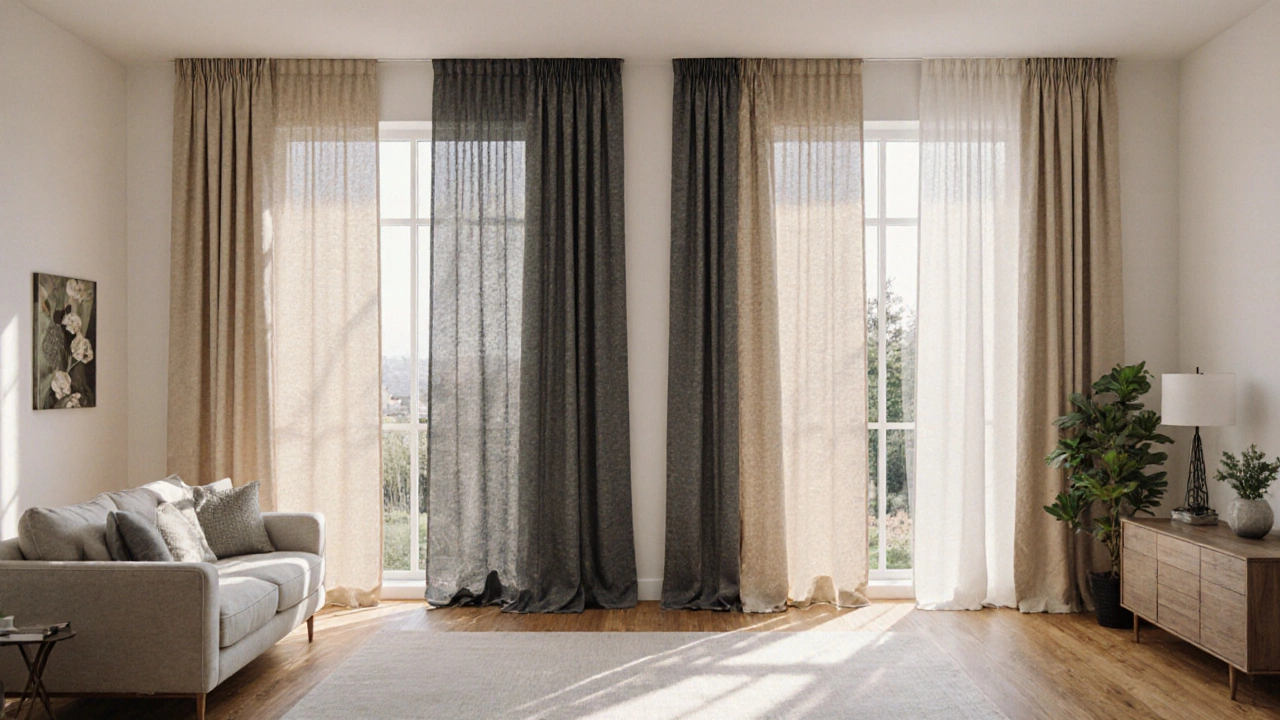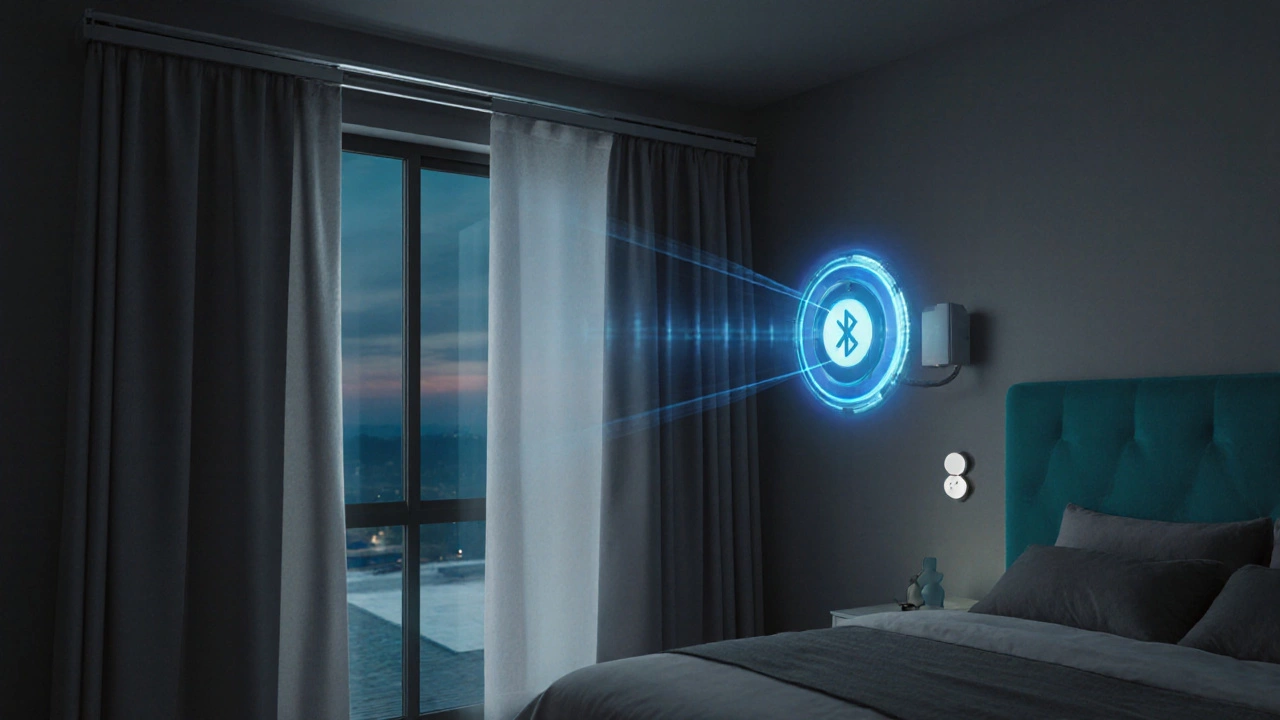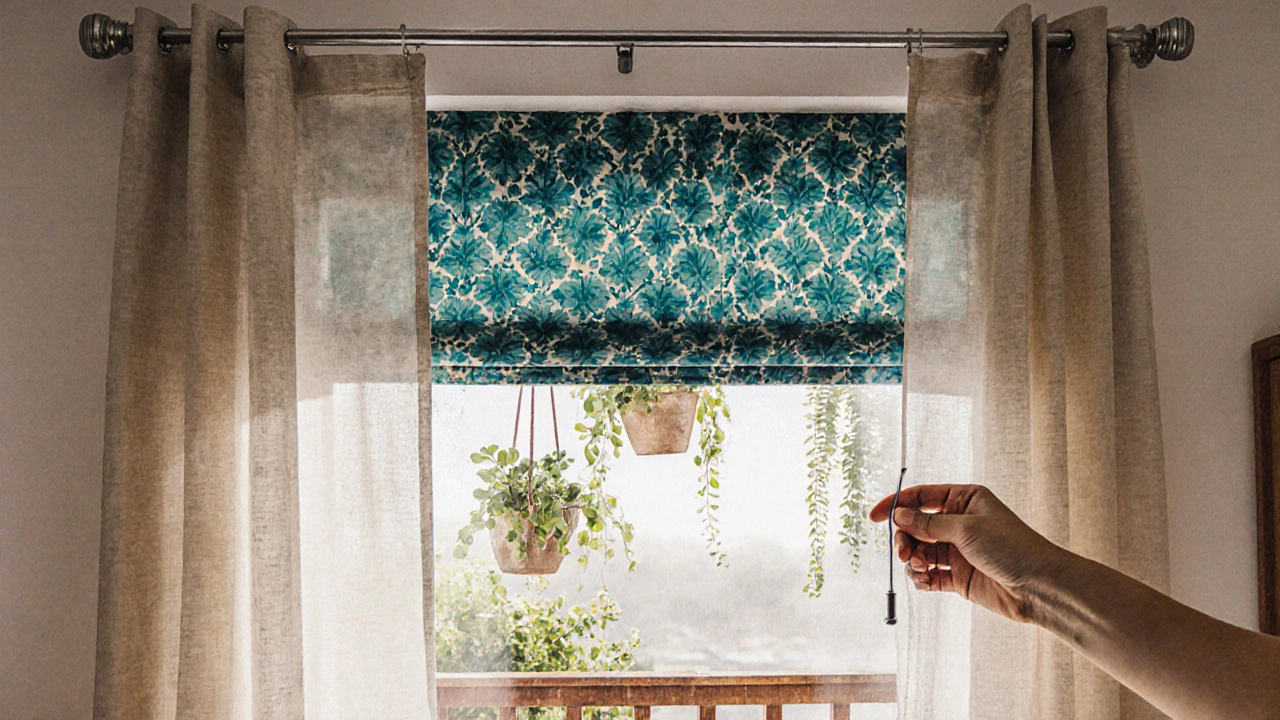Current Curtain Trends 2025: Styles, Fabrics, & Design Tips

Curtain Sizing Calculator
Measure Your Window
Results
Pro Tip: For best results, measure at the top of your window frame and add 2-4 inches for floor-length curtains. Multiply your window width by 1.5-2 for fullness.
When we talk about Curtains the fabric panels that dress windows, they’ve become a canvas for the biggest design shifts of 2025. From climate‑friendly fibers to AI‑driven motorized tracks, the market is moving fast. Below you’ll find the most tangible trends, why they matter, and how to bring them into your home without feeling overwhelmed.
Why 2025 feels different for curtains
Three forces are reshaping the curtain world this year:
- Eco‑consciousness: Homeowners demand low‑impact materials that still look luxe.
- Tech integration: Smart homes now expect window treatments to respond to voice, light, and temperature.
- Design polarization: Minimalist neutrals sit side‑by‑side with bold maximalist prints, giving buyers clear style pathways.
Understanding these drivers helps you pick trends that align with both your aesthetic and your values.
Fabric innovations driving the market
Fabric is where sustainability meets style. Below is a quick snapshot of the top five materials making waves in 2025.
| Material | Sustainability Score | Texture | Ideal Style |
|---|---|---|---|
| Organic Cotton | 9/10 | Soft, breathable | Minimalist, Coastal |
| Recycled Polyester | 8/10 | Smooth, drapes well | Modern, Urban |
| Hemp Blend | 9/10 | Textured, natural | Biophilic, Rustic |
| Tencel (Lyocell) | 9/10 | Silky, lightweight | Scandinavian, Minimalist |
| Linen (linen‑cotton mix) | 7/10 | Casual, airy | Maximalist, Mediterranean |
Prices have steadied after a pandemic‑driven surge, so you can now source Sustainable Fabrics at mid‑range budgets without sacrificing quality.
Color palettes and pattern moods
Two color stories dominate:
- Earthy neutrals - warm beiges, muted sage, and soft greys. They pair beautifully with Biophilic Design concepts that bring indoor plants into play.
- Vibrant jewel tones - teal, amethyst, and terracotta. These work best with Maximalist Patterns featuring botanical or abstract motifs.
For a truly fresh look, try a two‑tone layering: a sheer neutral base topped by a bold, patterned overlay. The effect feels custom‑tailored without extra cost.

Smart home integration: Motorized & responsive curtains
Automation is no longer a luxury. Motorized Track Systems now come with Bluetooth, Apple HomeKit, and Google Assistant compatibility out of the box.
- Install the track and connect it to your home hub.
- Set schedules - e.g., curtains open at sunrise and close at sunset.
- Link to temperature sensors so the system shades rooms when it gets too hot, saving on AC.
Most kits cost between $200‑$500, with battery‑backup options that keep them moving during power outages. The biggest mistake is over‑automating; keep a manual pull cord for emergencies.
Eco‑friendly choices beyond fabric
Material sustainability isn’t the only factor. Look for these additional green credentials:
- Natural Dyes: Plant‑based pigments like indigo, madder, and turmeric reduce chemical runoff.
- Zero‑VOC Finishes: Avoid flame‑retardants that emit volatile organic compounds.
- Recyclable Hardware: Choose aluminum or stainless steel rods that can be reclaimed.
When a brand publishes a lifecycle assessment report, that’s a good sign they practice transparency.
Styling tips for popular interior aesthetics
Whether your home leans minimalist or maximalist, curtains can anchor the look.
Minimalist Design
Go for floor‑length, plain panels in light, natural fibers. Pair with Smart Home Integration so the curtains glide silently, maintaining the clean vibe.
Maximalist Patterns
Layer a solid neutral backdrop with a bold printed overlay. Choose high‑contrast motifs-think oversized tropical leaves or geometric art deco. Keep the hardware sleek to avoid visual clutter.
Biophilic Spaces
Use hemp or linen in earthy tones, let the texture echo the wood and stone in the room. Add a row of hanging plants near the window; the curtains act as a soft filter.

Buying guide: What to check before you purchase
Use this quick checklist to avoid buyer’s remorse:
- Measure twice: width should be 1.5‑2× the window width for full coverage.
- Check fabric weight: heavier fabrics need sturdier rods and may require motorized tracks.
- Confirm care instructions: machine‑washable versus dry‑clean only.
- Validate sustainability claims: look for GOTS, OEKO‑Tex, or Cradle‑to‑Cradle certification.
- Test the pull mechanism (if manual) or app interface (if motorized) before finalizing.
Most retailers now offer a 30‑day return window, so you can test how the curtains look in daylight at home.
Common pitfalls and how to avoid them
Even seasoned decorators slip up. Here are the usual culprits and quick fixes:
- Over‑hanging hardware: Ensure the rod is properly anchored; otherwise, panels will sag.
- Wrong opacity: A sheer panel in a bright street‑facing room defeats privacy. Combine sheer with a blackout liner if needed.
- Neglecting seasonal changes: Fabrics that feel great in summer may look heavy in winter. Choose interchangeable liners.
Wrap‑up: The curtain future is personal and responsible
2025 is all about balancing style with stewardship. By choosing curtain trends 2025 that embrace sustainable fabrics, smart tech, and thoughtful design, you create a window treatment that looks good, feels good, and does good for the planet.
What are the most sustainable curtain fabrics right now?
Organic cotton, Tencel (lyocell), hemp blends, and recycled polyester lead the pack. They score high on carbon footprint, water usage, and durability.
Do motorized curtains really save energy?
Yes, when linked to temperature sensors they can shade a sun‑filled room, lowering cooling costs by up to 15% in hot climates.
How do I measure for floor‑length curtains?
Measure from the floor to the top of the window frame, then add 2‑4 inches for the desired puddle or sleek look. Multiply the width by 1.5‑2 for fullness.
Can I mix patterns without looking chaotic?
Yes-anchor with a solid base panel and layer a single patterned overlay. Keep colors in the same hue family to maintain cohesion.
What maintenance do eco‑friendly curtains need?
Most can be machine‑washed on a gentle cycle; avoid bleach. Hang to dry to preserve natural fibers and dyes.